20 years of exploration and discovery by a passionate guide
Sunday, August 5, 2018. Here I am again under the tall trees of the park that separates the train station from the beautiful Walther square, in Bolzano (Bozen in German), Italy. A special date: this is the twentieth summer I've accompanied tours in the Dolomites.
20 years is no longer love, it's addiction. And not only do I not want to be cured, but the only purpose of this post is to give you the virus.
So to celebrate 20 years of exploring and sharing, here are the top must-see places in the Dolomites... Preferably on foot, because that's the best way to enjoy them (unless you're more of a Dolomites cycling enthusiast).
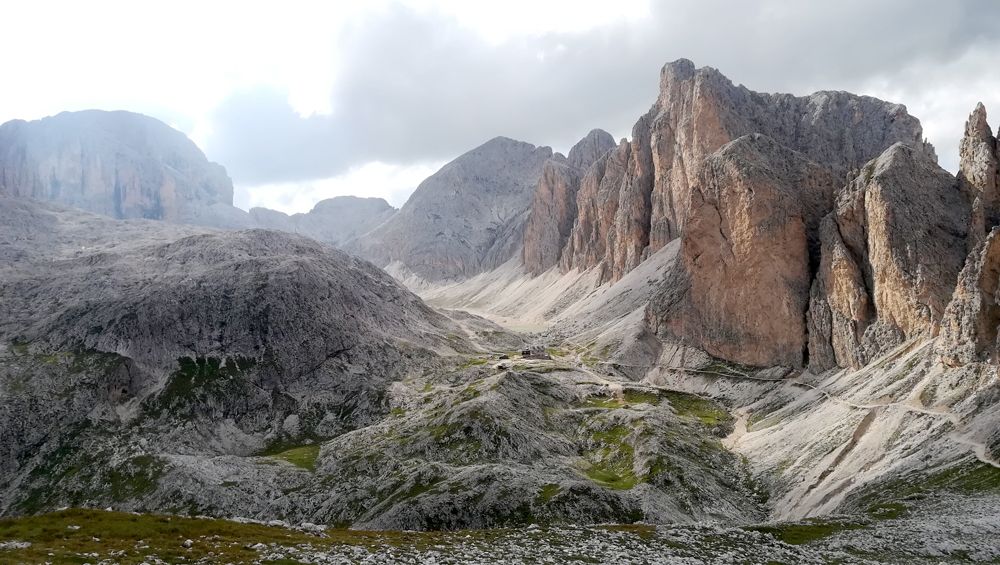
1. Via-Ferrata (or not)
Well, I imagine that if we say Dolomites, you think via ferrata. Well, let's forget about that for the moment.
The Dolomites are a large area of limestone mountains, pre-Alps, high up in the north-east of Italy, against the Austrian border and straddling the Veneto and the provinces of Trento and Bolzano. The latter have only been Italian since 1918, so in this area, both Italian and German are spoken. Are we in the Latin or Germanic area? The answer is “yes, of course”.
2. Unique landscapes
Obviously, there are the landscapes. Unique (yes, I know, like everywhere else). No, really. It's even a UNESCO World Heritage Site.
It's not that high, compared to the Austrian Alps on the horizon or Switzerland not far away, but there are plenty of 3000m/8945ft peaks and more, and here's how it's done:
In the valleys, it's (South)Tyrol as in the photos you see everywhere. Large forests, villages full of geraniums, hay meadows and cows::
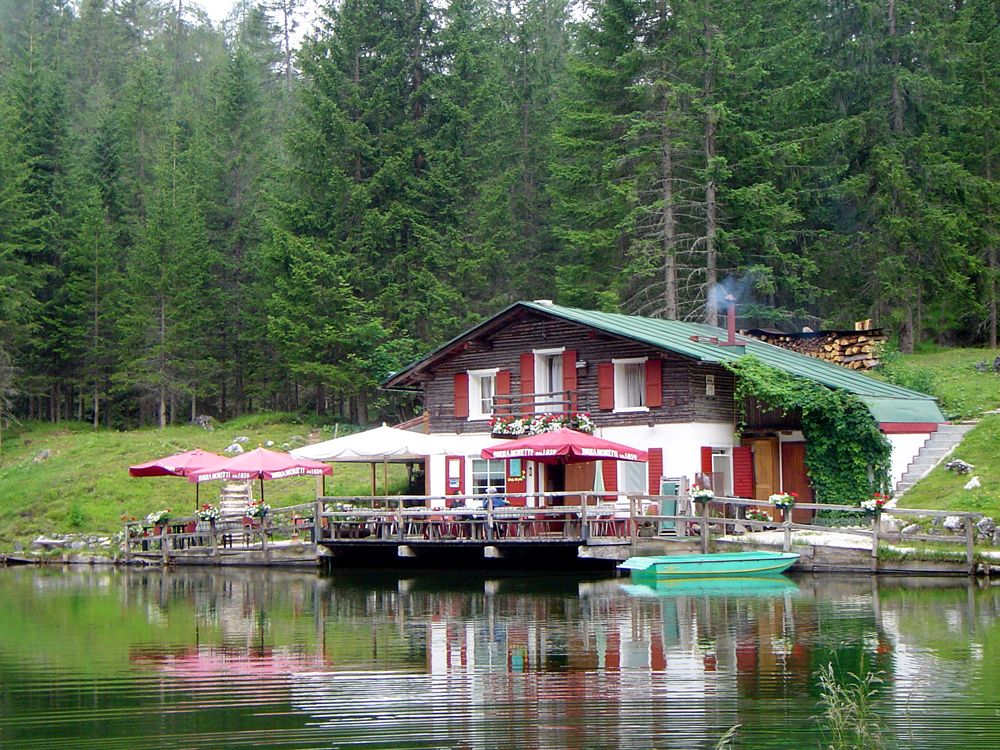
3. Green mountain pastures even in the height of summer!
A little higher up (around 1,800 to 2,000 m/5905 to 6560ft), you'll find vast, absolutely green alpine meadows and more cows than you can shake a stick at:
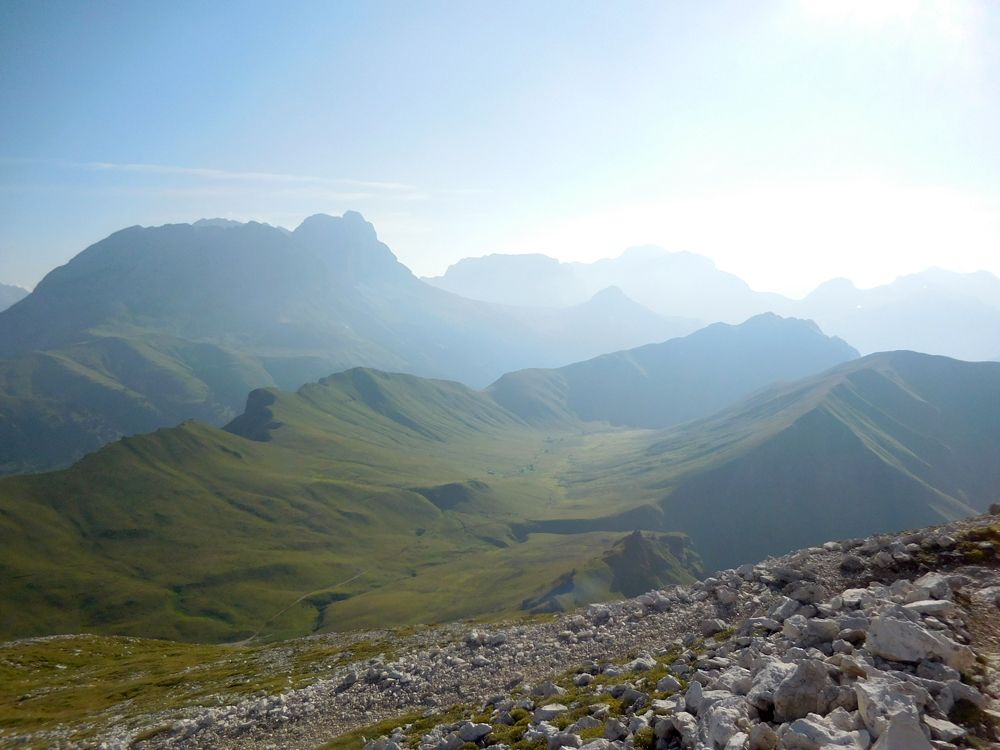
4. Impressive cliffs
And planted in there are colossal rock teeth all sculpted by erosion, and all different (and no more cows at all!) :
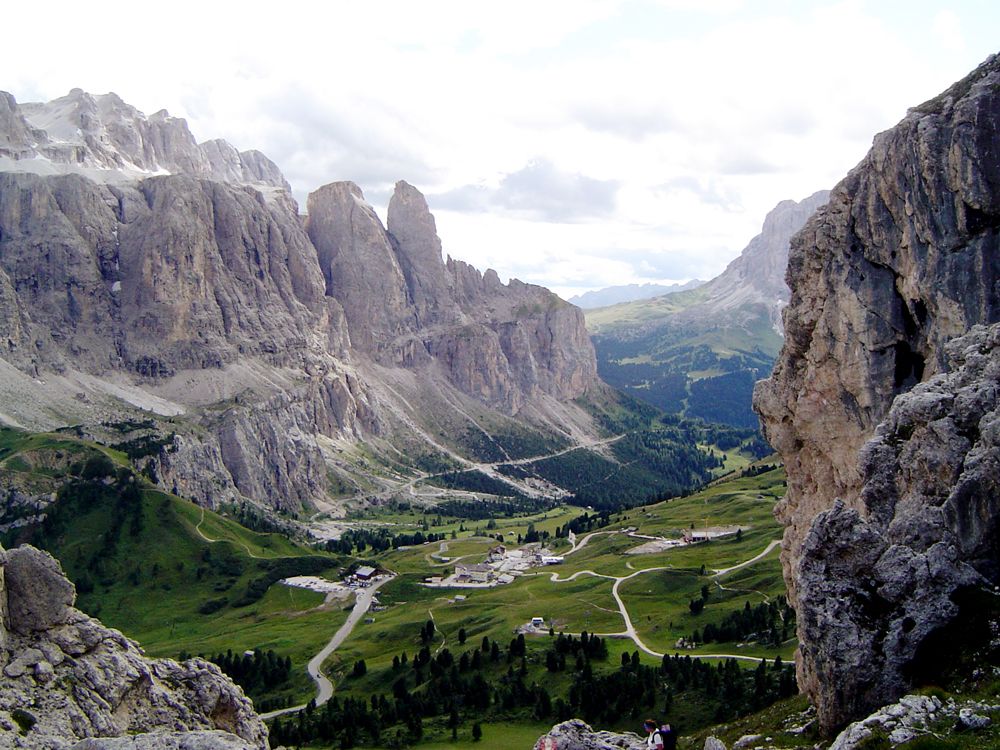
It looks good in the photos, but when you're there, it's something else. It takes time for the eye to acclimatize to these perspectives, to accept its new relative size, let's say it: tiny..
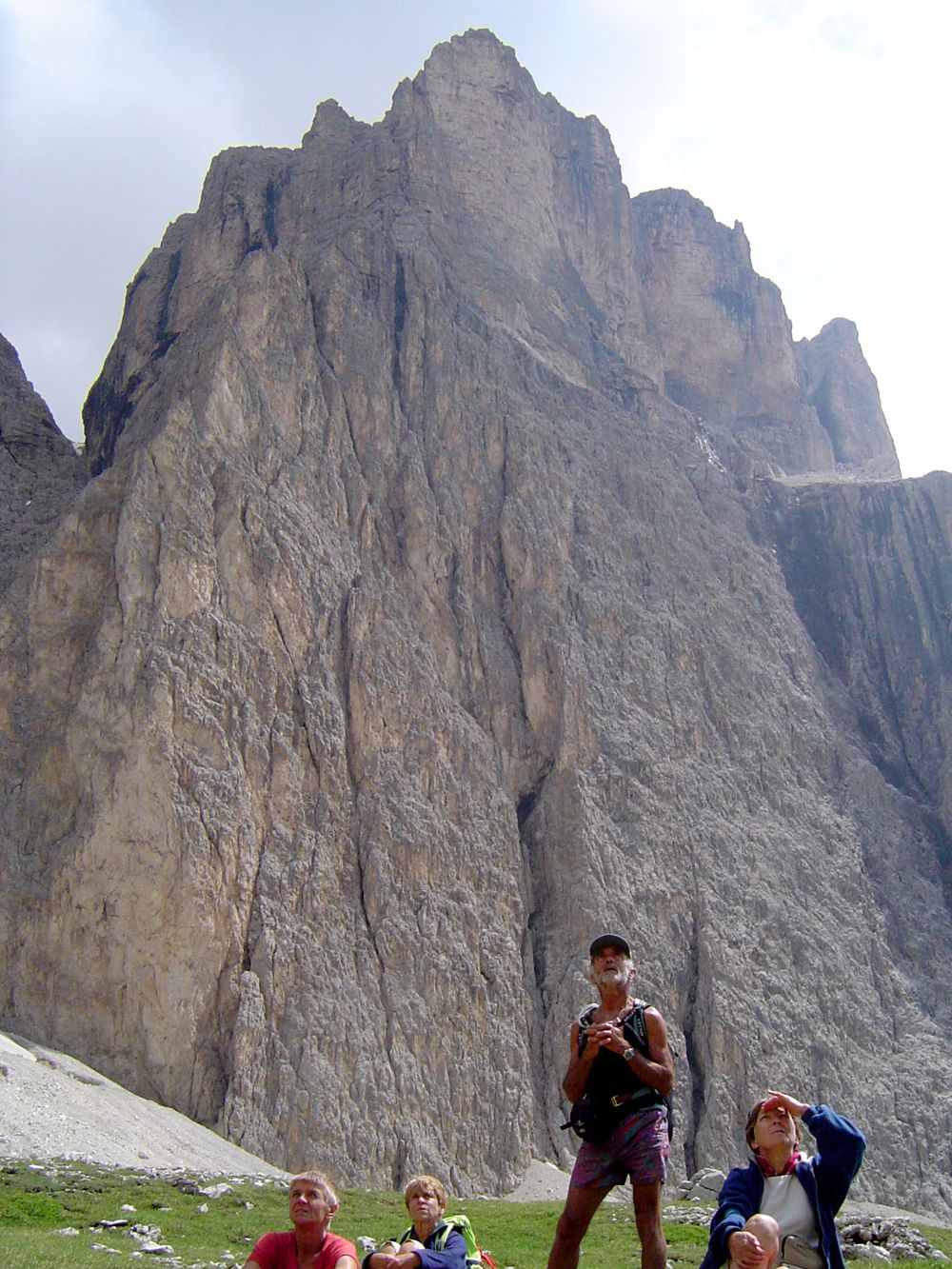
Once you've got the hang of it, you'll soon realize that you can get around just fine in the middle of it all, and that one of the things the two cultures have in common is a sense of welcome and good humor. The accommodation is comfortable, the food... just like in Italy (that's all there is to it), the trails nickel-chrome (except for some, but very high), the climate more favorable than in the massifs further north. In short, it's the land of exciting possibilities. If you've got a bit of calf muscle, that is.
And because it's so big, you can come back often without seeing the same places.
Here's a small selection of good spots
First and foremost, our friend Peter Messner (and his family) at the Gampenalm hut:

5. The Messners: exceptional kitchen and cellar!
It may be snowing outside (it happens sometimes), but at the Messners, the heart is always warm. And, er, the stomach too. Between Teresa's kitchen and Peter's cellar, you have to be motivated to leave the next day.
But we get there (we tell ourselves we'll be back), especially as it's much of the same further on down the trails of the Dolomites.
6. Tierseralpl and sunrises
In Tierseralpl, for example, with Judith, Stefan and their children. 2440m/8005ft altitude. A large, bright, fully renovated refuge in an unforgettable mountain setting. A must: see the sun rise over the mountains in the morning (at around 6:30 a.m. in July - this isn't Disneyland, folks):
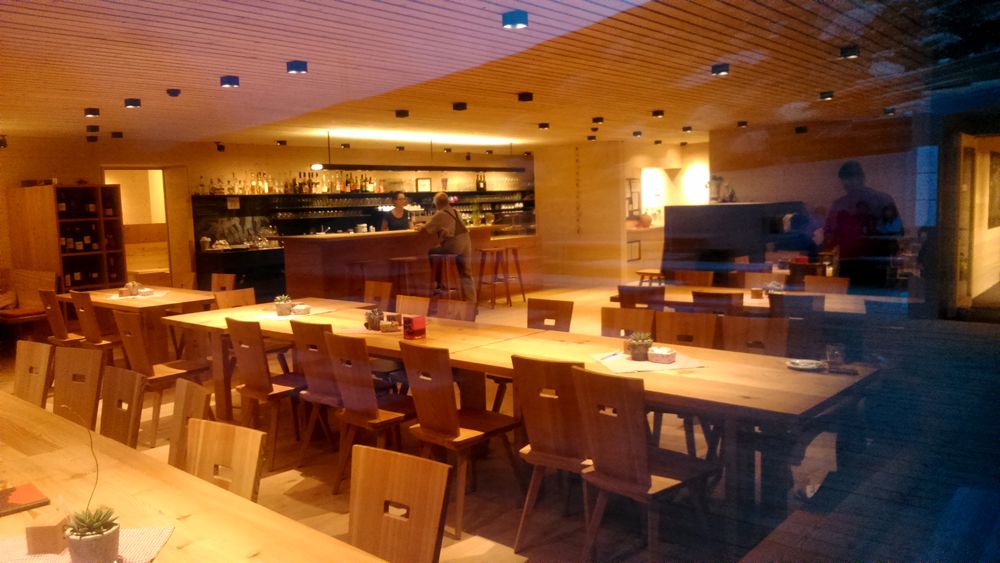
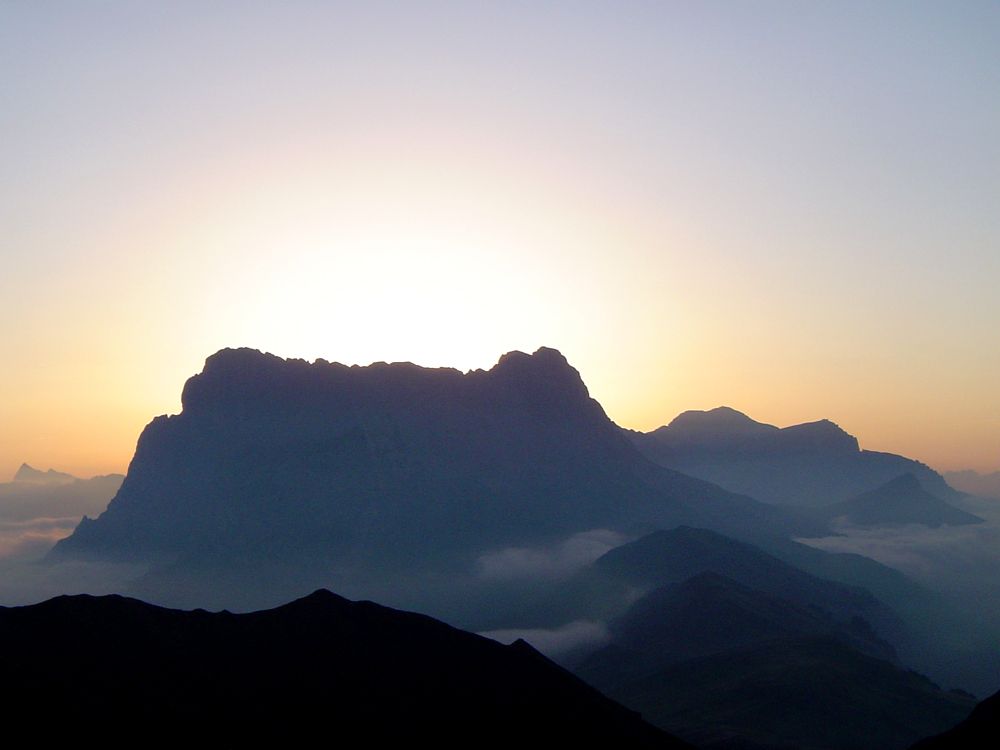
And also with Filippo and his family at the foot of the Rosengarten wall, at the Scotoni hut in its valley at the end of the world, at Friedrich August on the edge of the alpine pasture, just before the hollow, at Piz Boé in the sky (3150m/10,335ft above sea level and you get there on foot!) etc, etc.
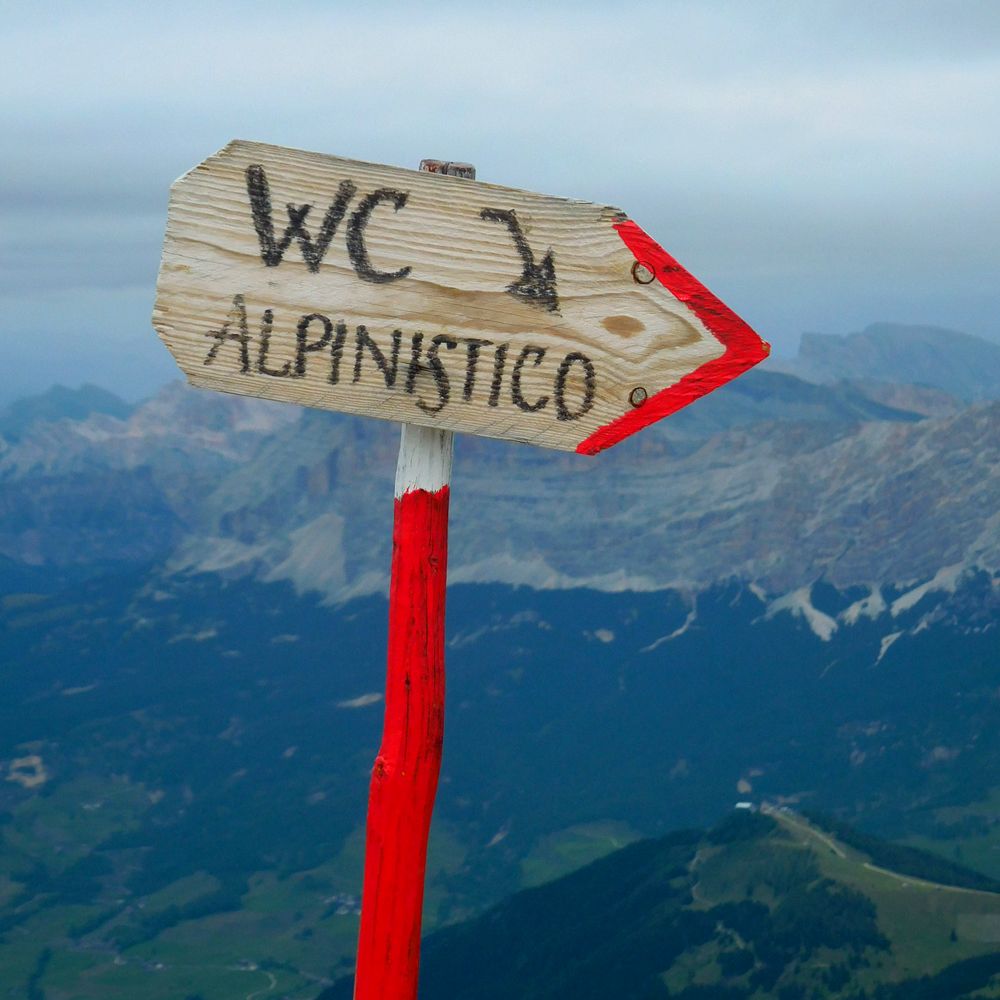
7. Rosengarten
Here it is, the Rosengarten. A huge, absolutely vertical wall, the stuff of legend (there are dozens of legends in the Dolomites):
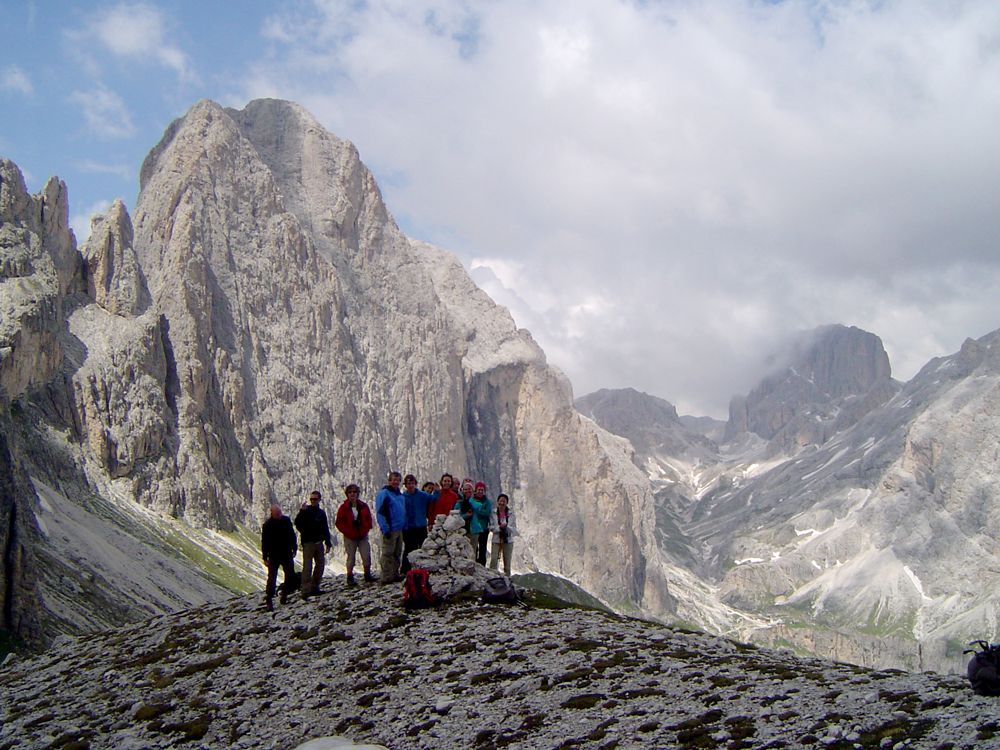
It's not the highest wall; the highest is the Civetta, further south and 1200m/3940ft high. It didn't fit in the photo, but here's the Sassolungo, 1000m/3280ft high:
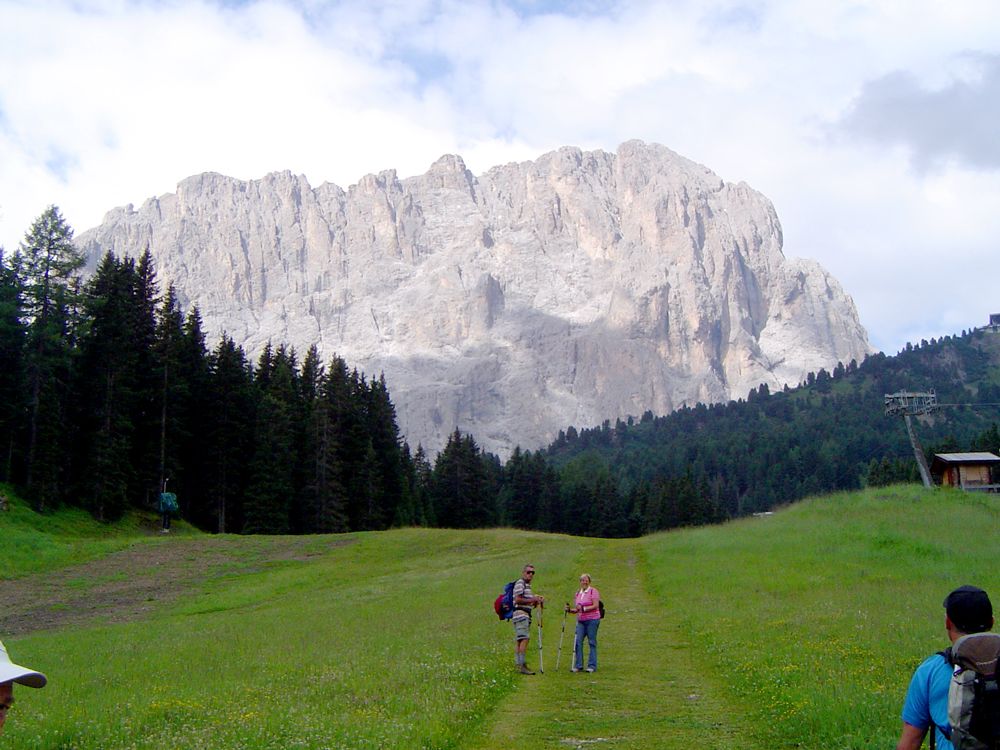
8. The Tre cime di Lavaredo
And the famous 3 peaks of Lavaredo, a world-renowned mountaineering site as unlikely as it is unforgettable (remember the dinosaur backs of your childhood?):
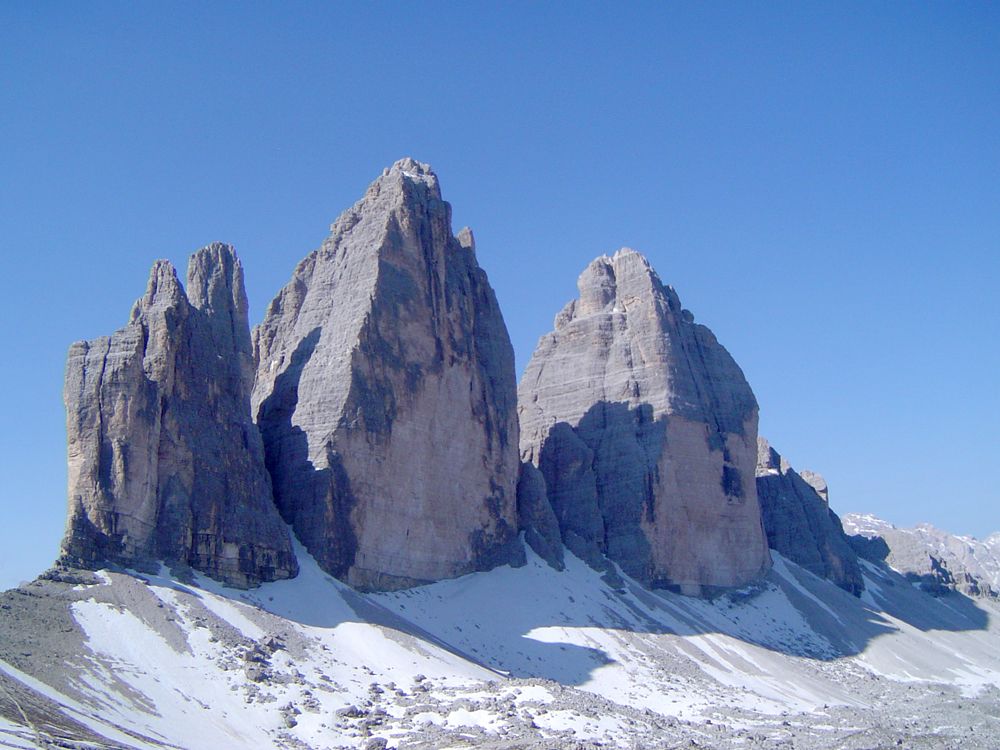
And gigantic glacial valleys, such as the Travenanzes:
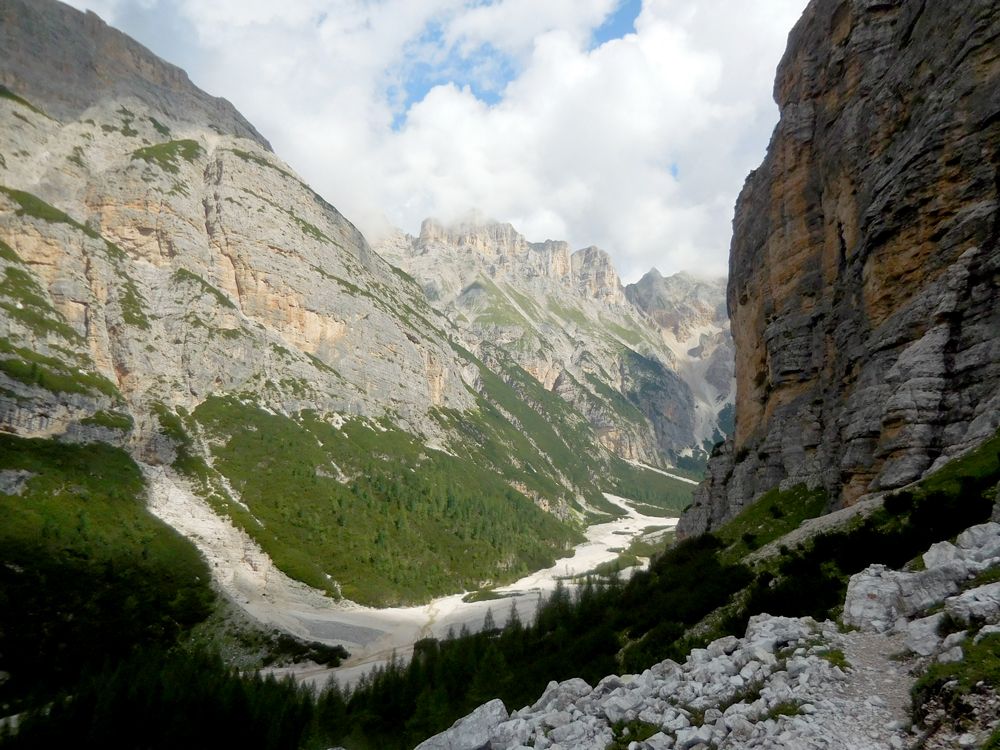
9. Puez Odle Nature Park
High altitude deserts, as in Puez :
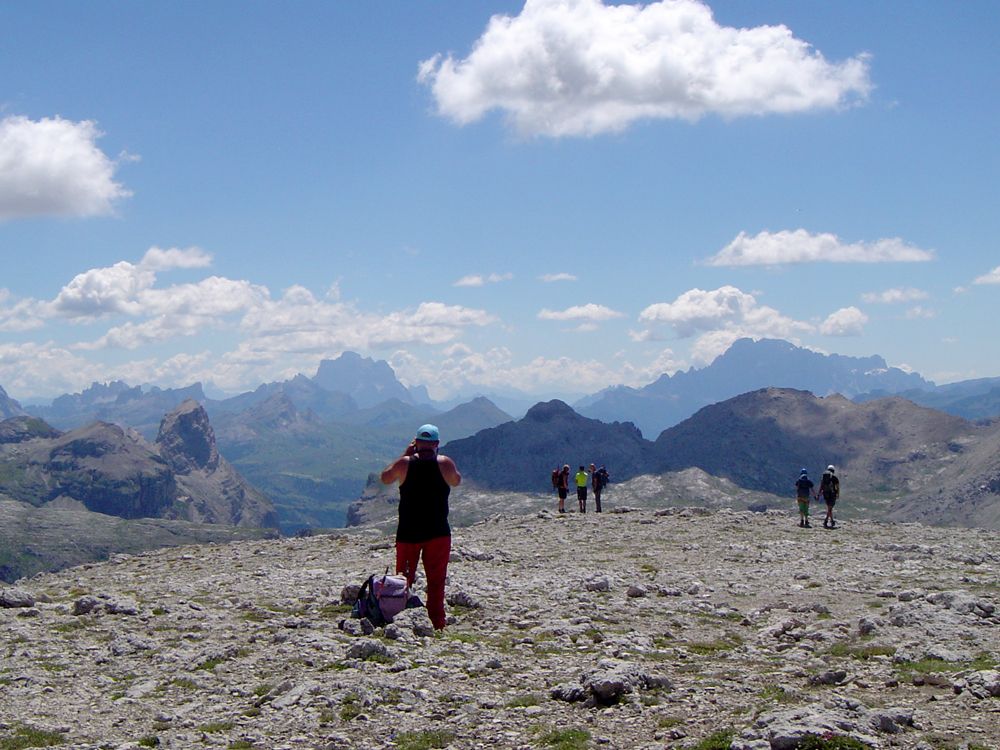
10. Haflinger horses
Paradise corners, like on the large Siusi alp, with its dark volcanic soil and deep green vegetation, its “haflinger” horses:
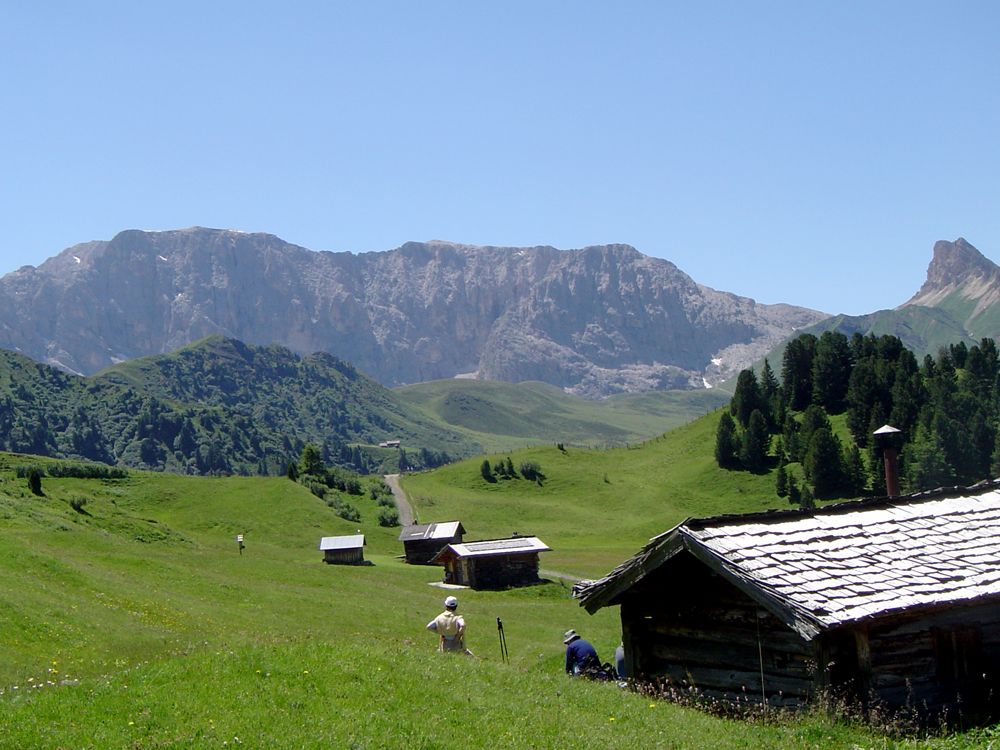
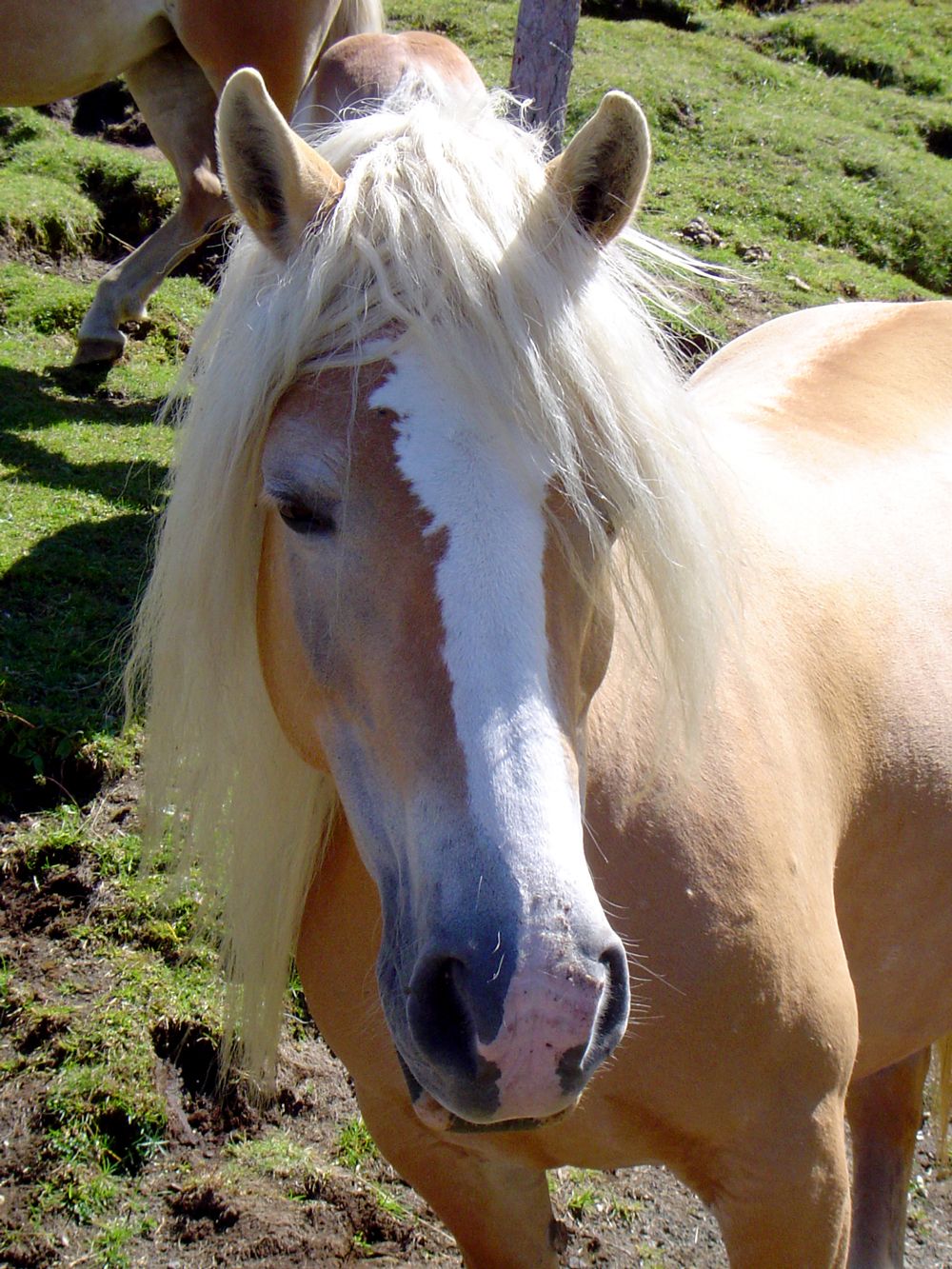
And hundreds of other breathtaking spots, and even more where you can just sit back and breathe:
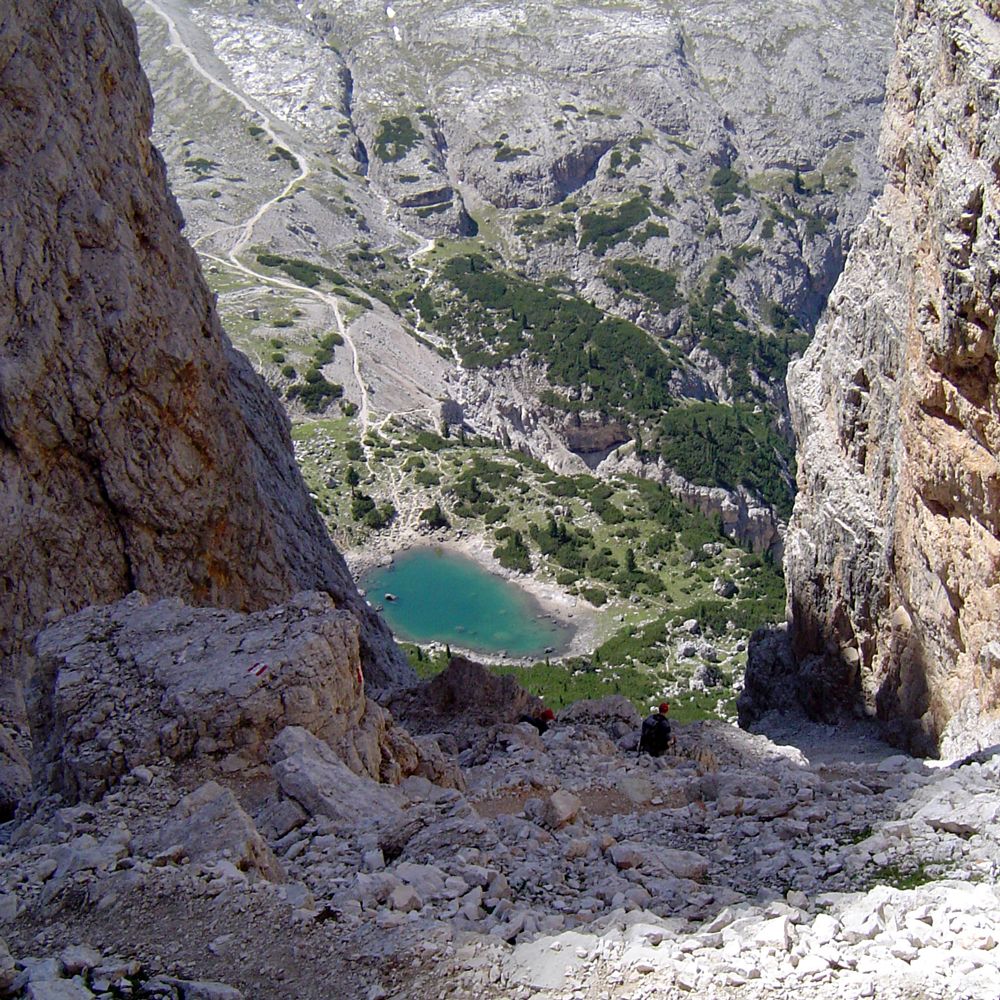
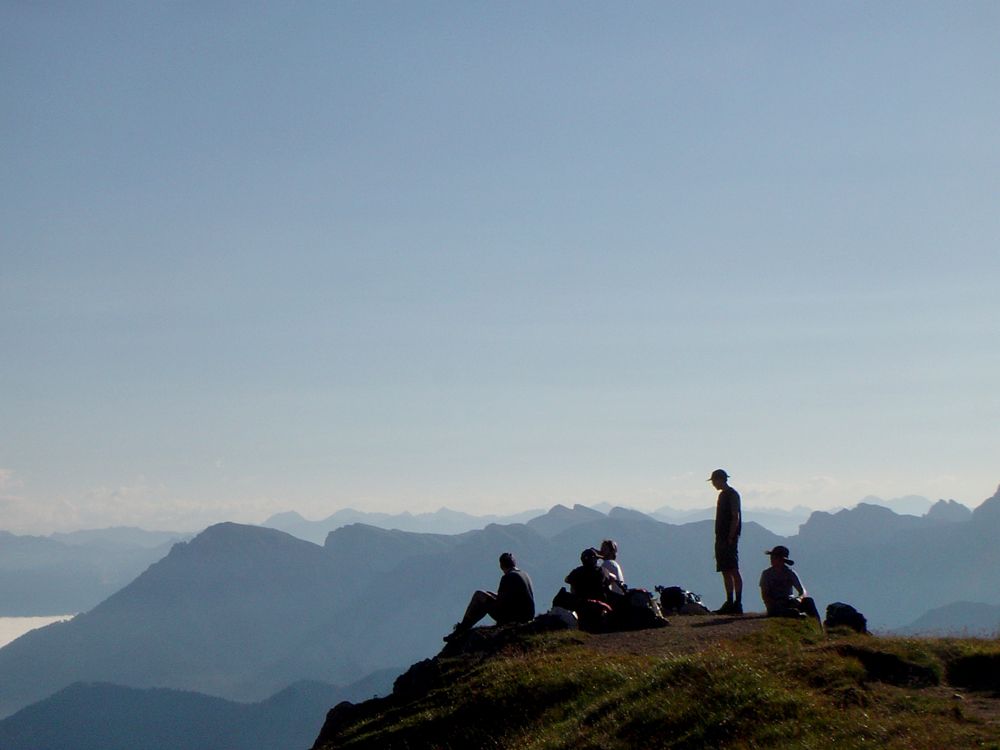
Well, the via ferrata (in Italian we say vie ferrate in the plural, so get used to it, it's a beautiful language). Yes, of course, there are plenty of them, both easy and challenging. That's where we invented them. If you're tempted, don't worry, they're there.
But you don't have to. You can also do classic climbing, with all these walls, you're spoiled for choice (but not many routes under 300m/985ft!).
Just teasing. Above all, there are hundreds of km/mi of trails where you can't get your hands on anything. Well, not often at all. A little in some places, though.
11. Something special to finish off
The rock is quite light (in Italian, the Dolomites are called “ I Monti Pallidi ”, the Pale Mountains), and reacts to changes in light during the day, especially at sunset, when it can get downright Dantesque (in Italy, that's to be expected):
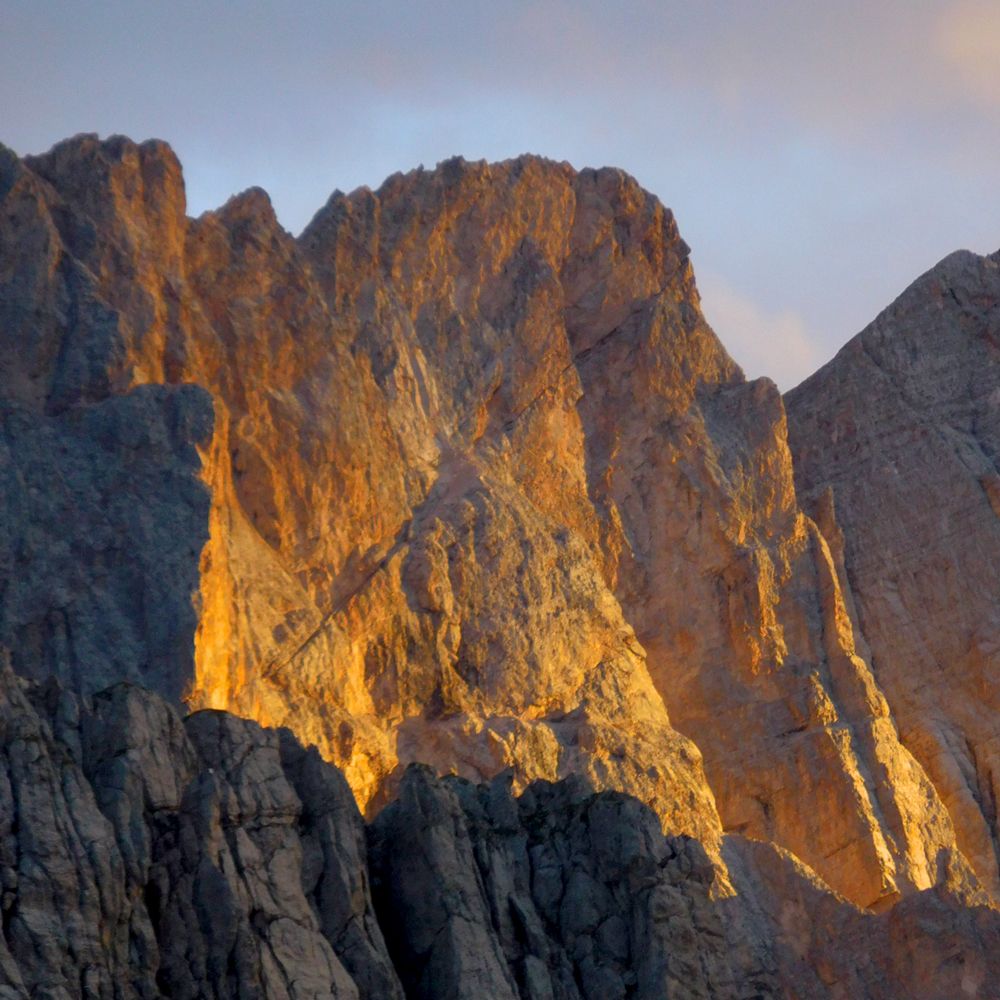
Attention photographers...
See you there, a presto, bis bald!
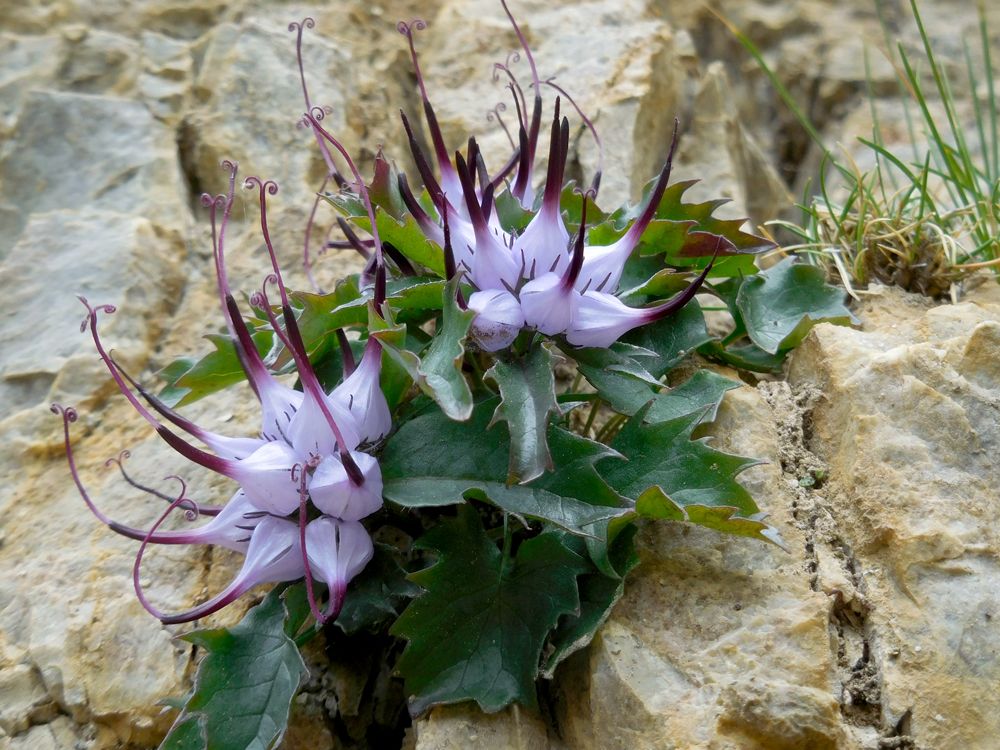
Did you like this story?
Then take a look at what Pierre, the guide, and Grand Angle, the Franco-Italian agency specializing in the finest treks in the Dolomites, have to offer.
Share the article on
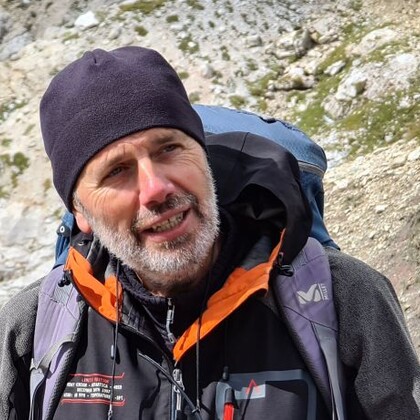
Written on 15/03/2019 by:
Pierre Paillat
Contemplative mountain leader

